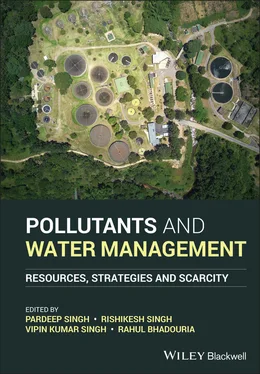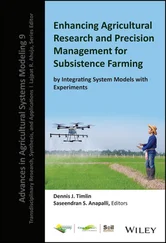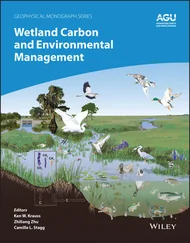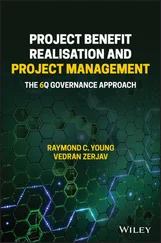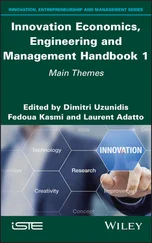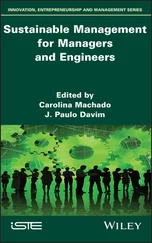Pollutants and Water Management
Здесь есть возможность читать онлайн «Pollutants and Water Management» — ознакомительный отрывок электронной книги совершенно бесплатно, а после прочтения отрывка купить полную версию. В некоторых случаях можно слушать аудио, скачать через торрент в формате fb2 и присутствует краткое содержание. Жанр: unrecognised, на английском языке. Описание произведения, (предисловие) а так же отзывы посетителей доступны на портале библиотеки ЛибКат.
- Название:Pollutants and Water Management
- Автор:
- Жанр:
- Год:неизвестен
- ISBN:нет данных
- Рейтинг книги:3 / 5. Голосов: 1
-
Избранное:Добавить в избранное
- Отзывы:
-
Ваша оценка:
- 60
- 1
- 2
- 3
- 4
- 5
Pollutants and Water Management: краткое содержание, описание и аннотация
Предлагаем к чтению аннотацию, описание, краткое содержание или предисловие (зависит от того, что написал сам автор книги «Pollutants and Water Management»). Если вы не нашли необходимую информацию о книге — напишите в комментариях, мы постараемся отыскать её.
WATER MANAGEMENT Pollutants and Water Management: Resources, Strategies and Scarcity
Pollutants and Water Management
Pollutants and Water Management: Resources, Strategies and Scarcity
Pollutants and Water Management — читать онлайн ознакомительный отрывок
Ниже представлен текст книги, разбитый по страницам. Система сохранения места последней прочитанной страницы, позволяет с удобством читать онлайн бесплатно книгу «Pollutants and Water Management», без необходимости каждый раз заново искать на чём Вы остановились. Поставьте закладку, и сможете в любой момент перейти на страницу, на которой закончили чтение.
Интервал:
Закладка:
Naresh Kumar SethyDepartment of Chemical Engineering and Technology, IIT (BHU), Varanasi, Uttar Pradesh, India
Shashikant Shivaji VhatkarDepartment of Nanoscience and Technology, Central University of Jharkhand, Ranchi, Jharkhand, India
Reetika ShuklaInstitute of Environment and Sustainable Development, Banaras Hindu University, Varanasi, Uttar Pradesh, India
Sushil Kumar ShuklaDepartment of Transport Science and Technology, Central University of Jharkhand, Ranchi, Jharkhand, India
Ajeet Kumar SinghEnvironmental Informatics and Spatial Modelling Lab (EISML), Department of Ecology and Environmental Sciences, School of Life Sciences, Pondicherry University, Pondicherry, Puducherry, India
Anubhuti SinghInstitute of Environment and Sustainable Development, Banaras Hindu University, Varanasi, Uttar Pradesh, India
Gurudatta SinghInstitute of Environment and Sustainable Development, Banaras Hindu University, Varanasi, Uttar Pradesh, India
Priyanka SinghInstitute of Environment and Sustainable Development, Banaras Hindu University, Varanasi, Uttar Pradesh, India
Ram Kishore SinghDepartment of Nanoscience and Technology, Central University of Jharkhand, Ranchi, Jharkhand, India
Sukhendra SinghSchool of Biochemical Engineering, IIT (BHU) Varanasi, Varanasi, Uttar Pradesh, India
Rupika SinhaDepartment of Biotechnology, MNNIT, Allahabad, Uttar Pradesh, India
K.S. SistaResearch and Development, Tata Steel, Jamshedpur, Uttar Pradesh, India
SwatiDepartment of Botany, BHU, Varanasi, Uttar Pradesh, India
Indu TripathiDepartment of Botany, University of Delhi, New Delhi, India Department of Environmental Studies, University of Delhi, New Delhi, India
Shashank TripathiInstitute of Environment and Sustainable Development, Banaras Hindu University, Varanasi, Uttar Pradesh, India
Bhawna VermaDepartment of Chemical Engineering and Technology, IIT (BHU), Varanasi, Uttar Pradesh, India
Satyam VermaEnvironmental Informatics and Spatial Modelling Lab (EISML), Department of Ecology and Environmental Sciences, School of Life Sciences, Pondicherry University, Pondicherry, Puducherry, India
Jitesh Narottam VyasCentral Water and Power Research Station, Pune, Maharashtra, India
Amit Kumar YadavSchool of Environment and Sustainable Development, Central University of Gujarat, Gandhinagar, Gujarat, India
Deepak YadavChemical Engineering Department, Harcourt Butler Technical University, Kanpur, Uttar Pradesh, India
Monika YadavDepartment of Environmental Studies, Faculty of Science, The Maharaja Sayajirao University of Baroda, Vadodara, Gujarat, India
1 Water Security and Human Health in Relation to Climate Change: An Indian Perspective
Ravishankar Kumar, Prafulla Kumar Sahoo, and Sunil Mittal
Department of Environmental Science and Technology, Central University of Punjab, Bathinda, Punjab, India
1.1 Introduction
The capacity of a population to maintain sustainable access to sufficient quantities of acceptable quality water to ensure human well‐being, livelihood, socio‐economic development, protection against water‐borne and water‐related disasters, and to preserve ecosystems is termed as water security (UN Water 2013). Water demand is increasing with time due to the booming population, rapid industrialization, rampant urbanization, and extensive agricultural practices. In the world, nearly 785 million people lack a safe drinking water service, including 144 million people dependent on surface water (WHO 2019). Nearly, 1.8 billion people use feces contaminated drinking water sources and have a high risk of contracting cholera, dysentery, typhoid, and polio (WHO 2019). It has been estimated that the world population will be around 9 billion by 2050 and water availability will be less than the current availability (UN WWDR 2015). As per a World Health Organization (WHO) estimation, by 2025, 50% of the global population will be living in water scarcity areas (WHO 2019). By 2050, the global water demand is expected to increase by 20–30% as compared with the current scenario, due to growing demand in the domestic and industrial sectors (UN WWDR 2019). The estimation of the United Nations World Water Development Report (2016) indicated that more than 40% of the global population could be living in severe water stress areas by 2050.
Presently, the world's two most populous countries, India and China, are facing severe water security problems. However, the conditions are more critical in India both in terms of quantity and quality due to a lack of required infrastructure, health services, and management. India has only 4% of the world's freshwater but accounts for 16% of the global population. India ranked 120th out of 122 nations in water quality index and 133rd among 180 nations in water availability (NITI Aayog 2018). Approximately 21% of diseases are related to water among all diseases of the country (Snyder 2020). As per UNICEF and WHO (2012) estimates, approximately 97 million Indians do not have access to safe water. Further, the findings of the 2011 census revealed that 138 million rural households had access to safe drinking water, whereas 685–690 million people lacked access to safe drinking water. An ironic fact is that more than 41% of the rural population (out of 833 million people) of India own mobile phones but have no access to potable water which is a basic need. Only 18% of the rural population have access to treated water (Unitus Seed Fund 2014; Forbes India, 2015).
The NITI Aayog report (2018) also said that India is facing its worst water crisis in history, which is only expected to become worse as the country's water demand is projected to be twice the available supply by 2030. The report said that 600 million currently face high to extreme water shortage, with around two lakh people dying every year due to inadequate access to potable water. The increasing water shortage will also affect the gross domestic product (GDP) of the nation, with the country suffering a loss of up to 6% of GDP in 2030 (NITI Aayog 2018).
The quality of both river and groundwater is deteriorating at a rapid pace, making water scarcity more severe. Even toxic heavy metals like uranium, lead, cadmium, selenium, and so on are also reported in groundwater samples from various states (Chowdhury et al. 2016; Kumar et al. 2018, 2020; Sharma et al. 2020). This may lead to severe consequences for water resources. According to the IDSA report (2010), it has been reported that India is expected to become “water‐stressed” by 2025 and “water‐scarce” by 2050.
Further, climate change is also affecting the water security of India as rising temperature affects the Himalayan glaciers as well as altering the monsoon pattern. The combination of these two factors affects the level of river water due to the melting of glaciers and intense rainfall. Further, groundwater resources are also affected directly and indirectly by the alteration of these factors. High water temperature, changes in timing, intensity, and duration of precipitation are the significant consequences of climate change which can further affect the water quality. The alternate pattern of precipitation leads to floods and droughts, which play an important role in the degradation of water quality by adding a quantum of concentrated pollutants. As per the World Bank report (2018), climate change can affect 6% GDP of some regions due to water security, resulting in migration and conflict. As per the United Nations Convention to Combat Desertification (UNCCD), by 2030, due to climate change impacts on water scarcity, 24–700 million people may be displaced from some arid and semi‐arid places.
Читать дальшеИнтервал:
Закладка:
Похожие книги на «Pollutants and Water Management»
Представляем Вашему вниманию похожие книги на «Pollutants and Water Management» списком для выбора. Мы отобрали схожую по названию и смыслу литературу в надежде предоставить читателям больше вариантов отыскать новые, интересные, ещё непрочитанные произведения.
Обсуждение, отзывы о книге «Pollutants and Water Management» и просто собственные мнения читателей. Оставьте ваши комментарии, напишите, что Вы думаете о произведении, его смысле или главных героях. Укажите что конкретно понравилось, а что нет, и почему Вы так считаете.
